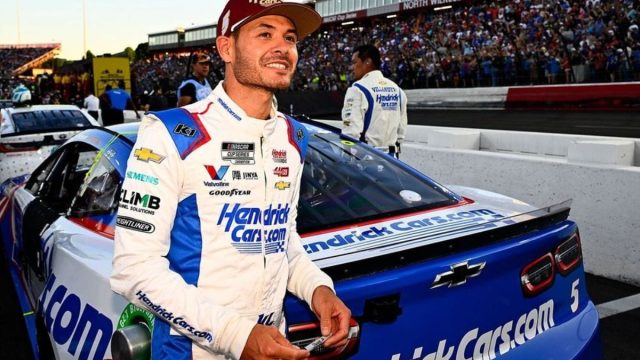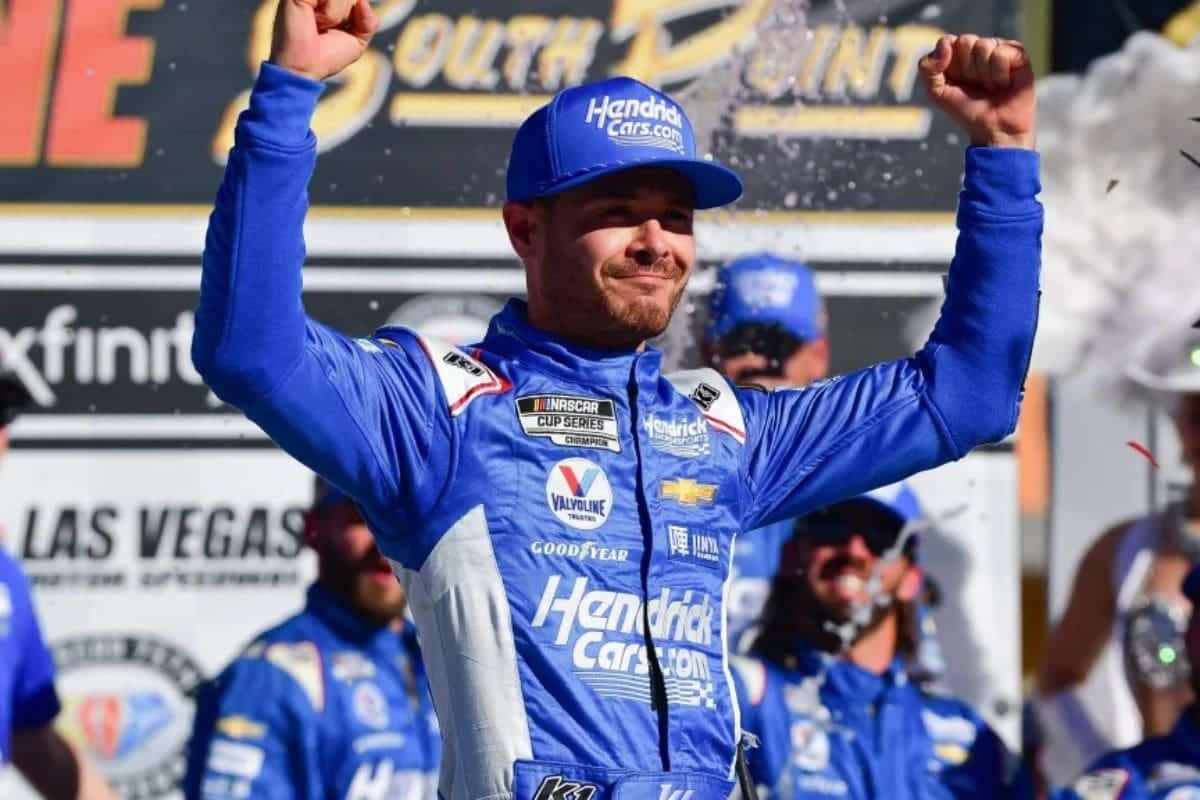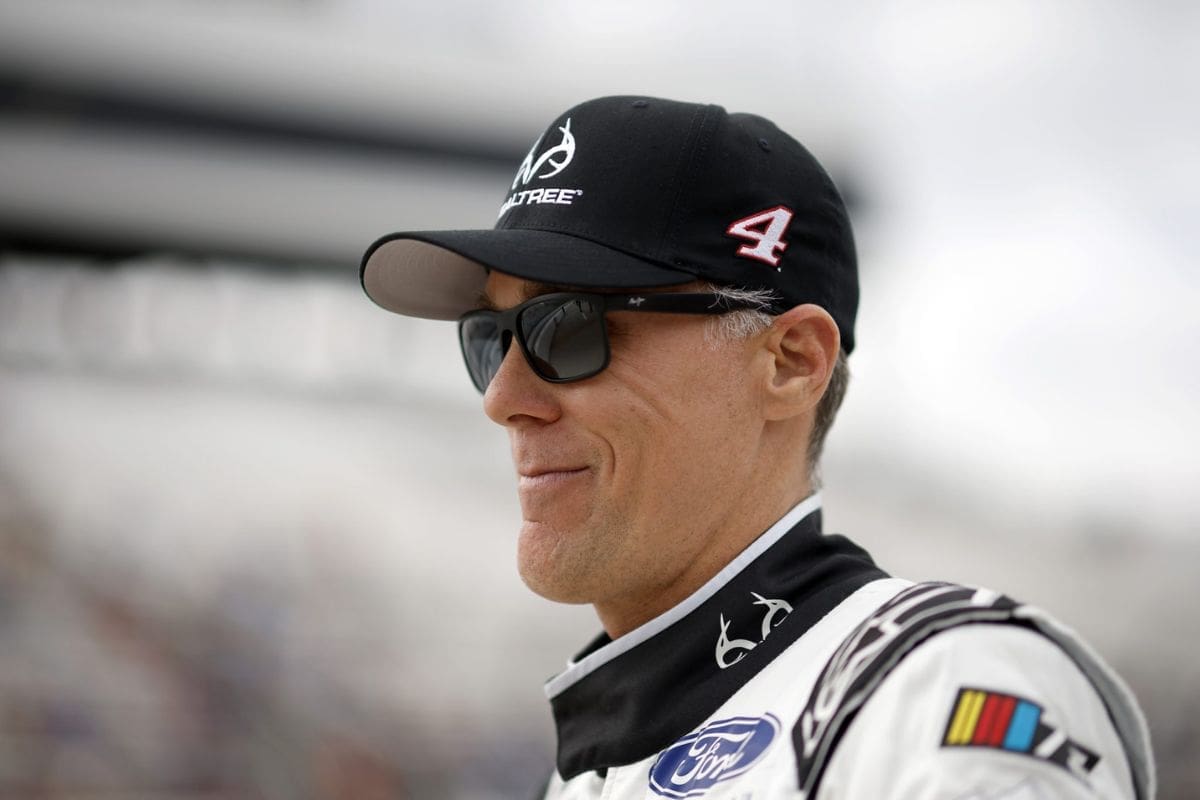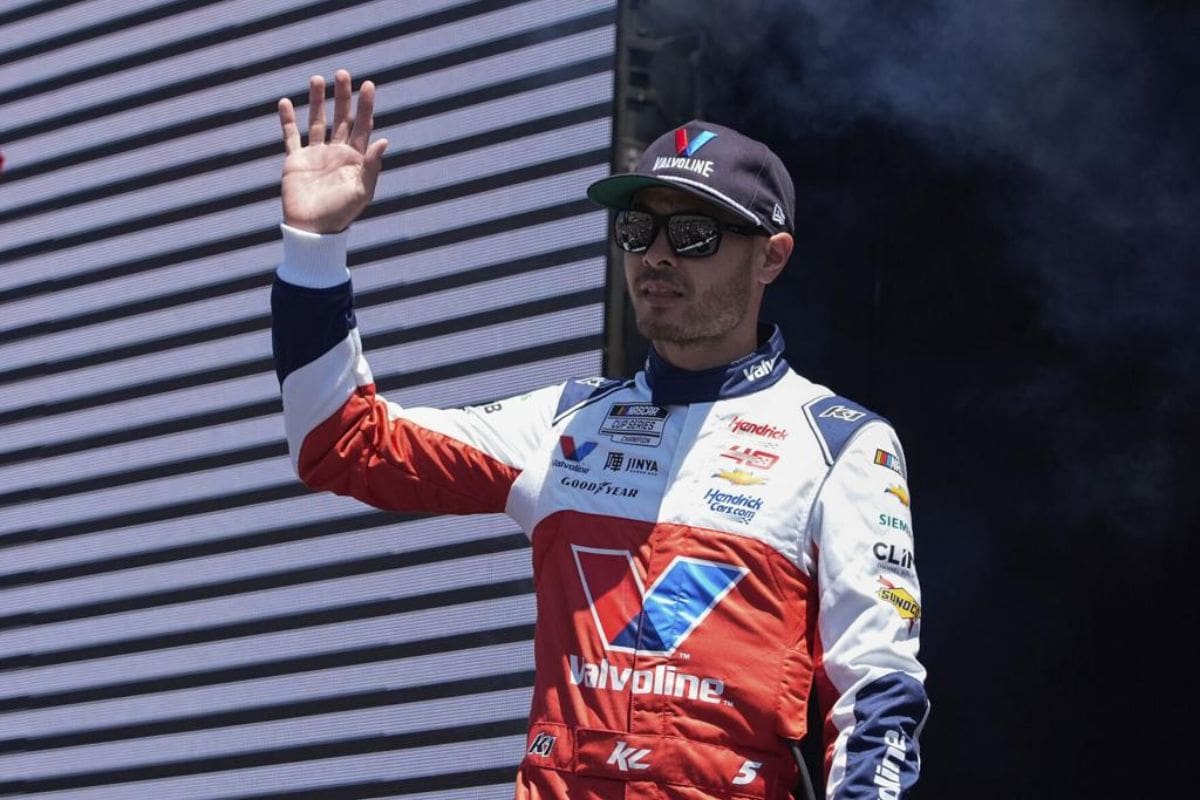Kyle Larson Disrupts NASCAR: Kyle Larson‘s frustration with his spotter’s advice during the USA Today 301 race has brought to significant communication breakdowns within NASCAR teams. Tensions over strategy misalignments, coupled with unpredictable weather conditions, led to a chaotic race environment. Kevin Harvick added fuel to the debate by criticizing spotters’ extensive involvement, claiming it disrupts driver focus. Larson’s insistence on better pit road conditions highlights the need for clearer guidelines and improved strategies, especially during inclement weather. This incident reveals critical gaps in NASCAR’s decision-making processes and paves the way for potential reforms in racing protocols.
Key Highlights
- Larson’s frustration with spotter advice during USA Today 301 race highlights communication breakdown.
- Vocal disagreements over team radio reveal deeper issues in strategy and trust.
- Slick pit road conditions and inconsistent strategy contribute to competition and safety concerns.
- Kevin Harvick critiques spotters’ extensive involvement, advocating for driver autonomy.
- NASCAR’s use of wet weather tires introduces unpredictable variables, emphasizing need for clearer guidelines.
Kyle Larson’s Frustration with Spotter’s Advice
Moving through the setting of the USA Today 301, Kyle Larson’s frustration became palpable as he repeatedly questioned the direction provided by his spotter, Tyler Monn. The race, characterized by its aggressive and wild pace, demanded a good strategy and communication between driver and spotter. However, Larson’s discontent with Monn’s advice highlighted a critical breakdown in this vital dynamic.
“He runs you like that all the time. You know why? Because you let it happen.” – Tyler
“shut the f**k up.” – Larson
Throughout the race, Larson found himself locked in a fierce battle with Denny Hamlin, each move requiring precision and split-second decision-making. Monn, tasked with guiding Larson through the chaotic traffic and strategically advising on actions, faced scrutiny as his guidance seemed to clash with Larson’s instincts. The tension was evident during several key instances, especially when Larson vocally expressed his dissatisfaction with Monn’s calls over the team radio.
The core of Larson’s frustration appeared to stem from a perceived crookedness in track strategy. Monn’s instructions, likely intended to position Larson advantageously, were met with resistance, suggesting a fundamental disconnect. This discord was not merely a matter of differing opinions but pointed to deeper issues in communication and trust. As Larson navigated the high-pressure environment, the consistent questioning of Monn’s advice highlighted a critical lapse in their collaborative effectiveness.
In the world of NASCAR, where the margin between victory and defeat is thin, such misalignments can prove costly. Larson’s visible discontent served as a stark reminder of the crucial nature of cohesive strategy and the indispensable role of spotter-driver synergy. The incident at the USA Today 301 highlighted the intricate balance required in NASCAR to harmonize instinct with strategic guidance.
Kevin Harvick Criticizes Spotters’ Involvement
Veteran driver Kevin Harvick has sparked a heated debate by openly criticizing the extensive involvement of spotters in NASCAR races, arguing that their excessive communication disrupts drivers’ focus and undermines their autonomy on the track. Harvick’s stance, rooted in his vast experience and success in the sport, suggests that the constant chatter from spotters can be a distraction, rather than an aid, to drivers who rely heavily on their own instincts and decision-making skills during high-pressure situations.
“I can see where the spotter is coming from in that scenario, but I also think that the spotter should probably keep his mouth shut and not say that. I think he needs to stay in his lane … A lot of times these spotters take a little bit more leeway with the things that they say on the radio than they probably should.” – kevin harvick
Harvick’s critique comes at a time when the role of spotters has evolved significantly, with many drivers depending on them for real-time updates on track conditions, competitor positions, and strategic advice. However, Harvick contends that this over-reliance on external information can lead to a diminished sense of situational awareness and self-reliance among drivers. He advocates for a more balanced approach, where spotters provide essential information without encroaching on the driver’s ability to make independent, split-second decisions.
“I think a lot of those spotters talk too much, and sometimes they think they’re driving the car. So everybody’s out there being competitive, but as a driver, you don’t want to hear that. I would have told him to shut the f**k up.” – harvick
This perspective has ignited a broader conversation within the NASCAR community about the best balance between driver independence and spotter input. Some drivers and teams support Harvick’s viewpoint, emphasizing the importance of maintaining the driver’s primary role in decision-making. Others, however, argue that the evolving complexity and speed of modern racing necessitate thorough communication to maintain safety and competitiveness.
Race Interrupted by Weather Conditions
The USA Today 301 race faced significant disruptions as rain showers swept across the track, compelling NASCAR to deploy wet weather tires and adjust pit stop protocols to limit them to fueling only, thereby upending established driver strategies.
The sudden downpour caught teams off guard, leading to a scramble for wet weather tires, which are rarely used in NASCAR events. The change necessitated an immediate adaptation from drivers and crews equally, with the race evolving from a straightforward dry contest to a test of skill and strategy in wet conditions.
The revised pit stop protocol, restricting teams to fueling only, further compounded the complexity. Traditionally, pit stops serve as critical moments for tire changes, adjustments, and refueling, allowing teams to fine-tune their vehicles for peak performance. However, the new restriction forced teams to rethink their approach, as they could no longer make the usual mechanical adjustments during these stops. This limitation placed a premium on pre-existing setups and driver adaptability, as they had to navigate the slick track with less-than-ideal configurations.
The rain-induced chaos led to several on-track incidents and near-misses, testing the drivers’ skill in maintaining control under treacherous conditions. For some, the wet track became an equalizer, leveling the playing field and offering opportunities for less dominant drivers to shine. Conversely, for those leading the race, the unpredictable conditions posed a significant threat to their hard-earned positions.
Larson’s Feedback on Wet Weather Racing
Kyle Larson, reflecting on the wet weather racing conditions, emphasized the need for more thorough pit road drying to facilitate varied tire strategies and enhance the general excitement of the race. According to Larson, the inconsistent conditions on pit road greatly impede the teams’ ability to make strategic decisions, particularly in terms of switching between wet and dry tires. This, he believes, limits the potential for tactical ingenuity and the thrilling unpredictability that fans cherish.
Larson pointed out that the current protocol for addressing wet conditions often leaves pit road slick and treacherous, which can be a major safety concern for both drivers and pit crews. More importantly, it restricts teams from taking calculated risks. ‘If pit road isn’t dry enough, teams are less likely to gamble on tire changes that could dramatically alter the race’s outcome,’ Larson noted. ‘We need to give teams the tools to be bold and creative; that’s what makes racing exciting.’
“I wish we could spend more time drying pit roads. That way, we could have more strategy. You know, they mandate us to put on damps the wet tires, and after that, it’s up to us. I think if they can spend more time drying pit road rather than the track, it would make for a way more exciting strategy-style race, comers and goers. Hopefully, we are inching towards that.” – Larson
In his detailed feedback, Larson also highlighted that improved pit road conditions could enhance the overall quality of the competition. By ensuring that pit road is sufficiently dry, teams could better strategize and potentially shift their approaches mid-race, fostering a dynamic and competitive environment. This adjustment could lead to more frequent position changes and unexpected results, keeping spectators on the edge of their seats.
NASCAR’s Decision Making and Future Considerations
Amidst the challenges posed by unpredictable weather conditions, NASCAR’s decision-making process regarding the use of wet weather tires highlights the need for clearer guidelines and more adaptable strategic options in future races. This recent event emphasizes the complexities involved in balancing safety with the competitive integrity of the sport.
The use of wet Goodyear weather tires, while necessary for maintaining traction and reducing the risk of accidents, also introduces variables that teams must navigate, often with limited precedent or experience.
The decision to continue the race despite adverse weather has sparked debate among teams and drivers. Many argue that clearer, more consistent guidelines would help mitigate confusion and ensure a fairer competition. Currently, the criteria for switching to wet weather tires can appear vague, leading to divergent strategies and, in some cases, contentious outcomes. Teams find themselves having to make split-second decisions without detailed guidelines, which can lead to significant disparities in race performance.
Looking forward, NASCAR must consider revising its protocols to incorporate more detailed contingency plans for inclement weather. This includes not only the conditions under which wet weather tires should be deployed but also the communication channels and timing mechanisms that govern these decisions. Moreover, enhancing simulations and practice sessions under wet conditions could provide teams with better preparatory experiences, fostering a more level playing field.
News in Brief: Kyle Larson Disrupts NASCAR
The recent NASCAR race highlighted significant tensions between drivers and spotters, with Kyle Larson expressing dissatisfaction and Kevin Harvick openly criticizing their roles.
The chaotic race, further accentuated by adverse weather conditions, emphasized the need for improved communication and strategic adjustments. Larson’s frank feedback on wet weather racing adds a crucial dimension to the ongoing discourse.
NASCAR’s decision-making process must evolve to address these challenges and improve race management and safety considerations.
Our Reader’s Queries
Q. How old is NASCAR Kyle Larson?
A. The penalty dropped him a lap down, ending any realistic shot the 31-year-old driver had at winning the race. Despite this setback, Larson, who started fifth, managed to get back on the lead lap, marking a significant accomplishment. He expressed hopes to return to the Indy 500 in 2025.
Q. Is Kyle Larson in the NASCAR playoffs?
A. Larson marked NASCAR’s approval of his playoff participation with his third Cup victory of the season, clinching a win on Sunday at his hometown track.
Q. How many times has Kyle Larson won in NASCAR?
A. Larson has claimed victories in the NASCAR All-Star Races in 2019, 2021, and 2023. His accolades also include earning Sunoco Rookie of the Year honors in 2014, following a similar achievement in the NASCAR Xfinity Series back in 2013. Additionally, Larson boasts 15 career wins in the Xfinity Series and has secured three victories in the NASCAR Craftsman Truck Series.
ALSO READ: Kyle Larson Talks Chevy’s NASCAR Struggles at New Hampshire



